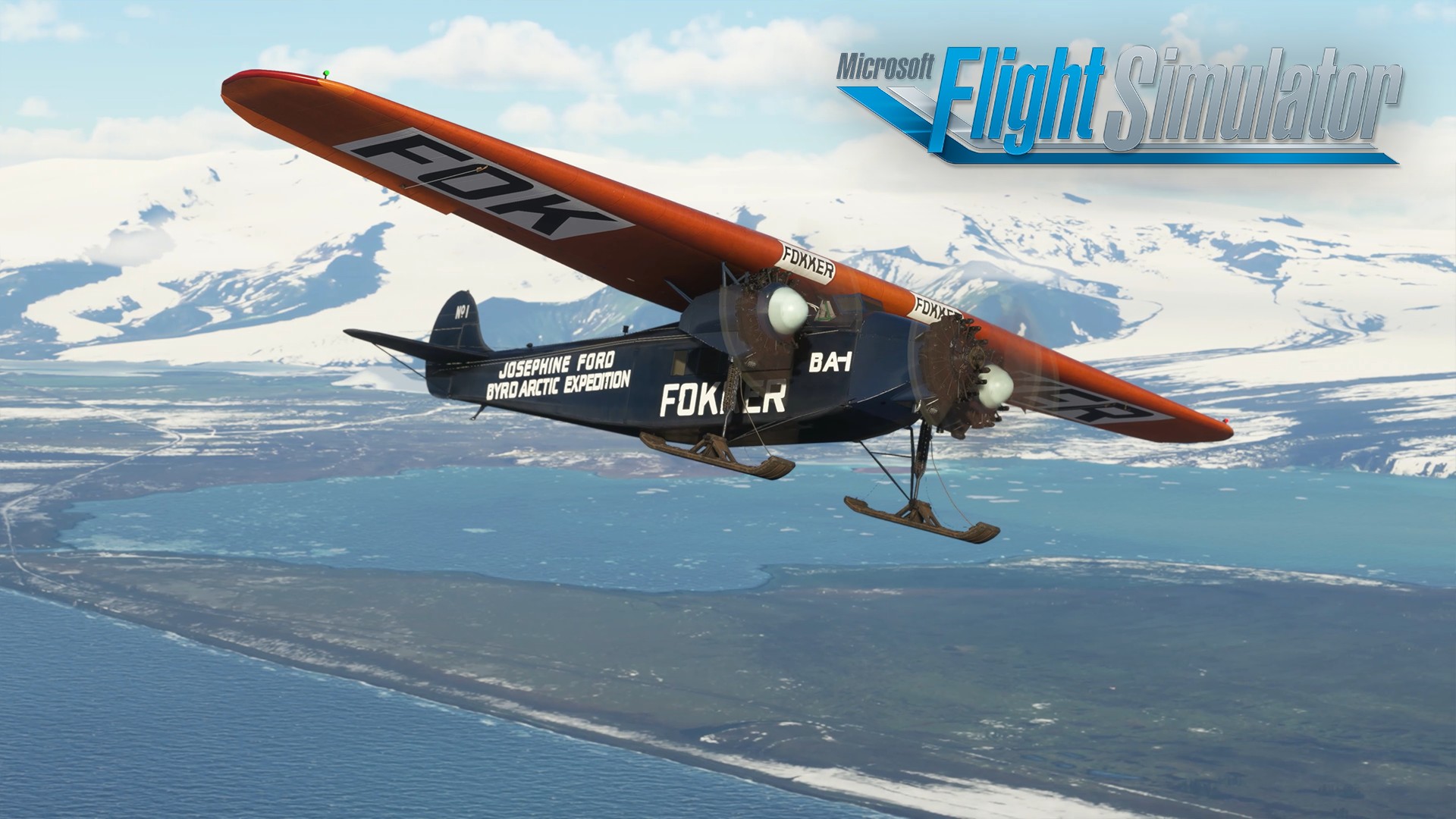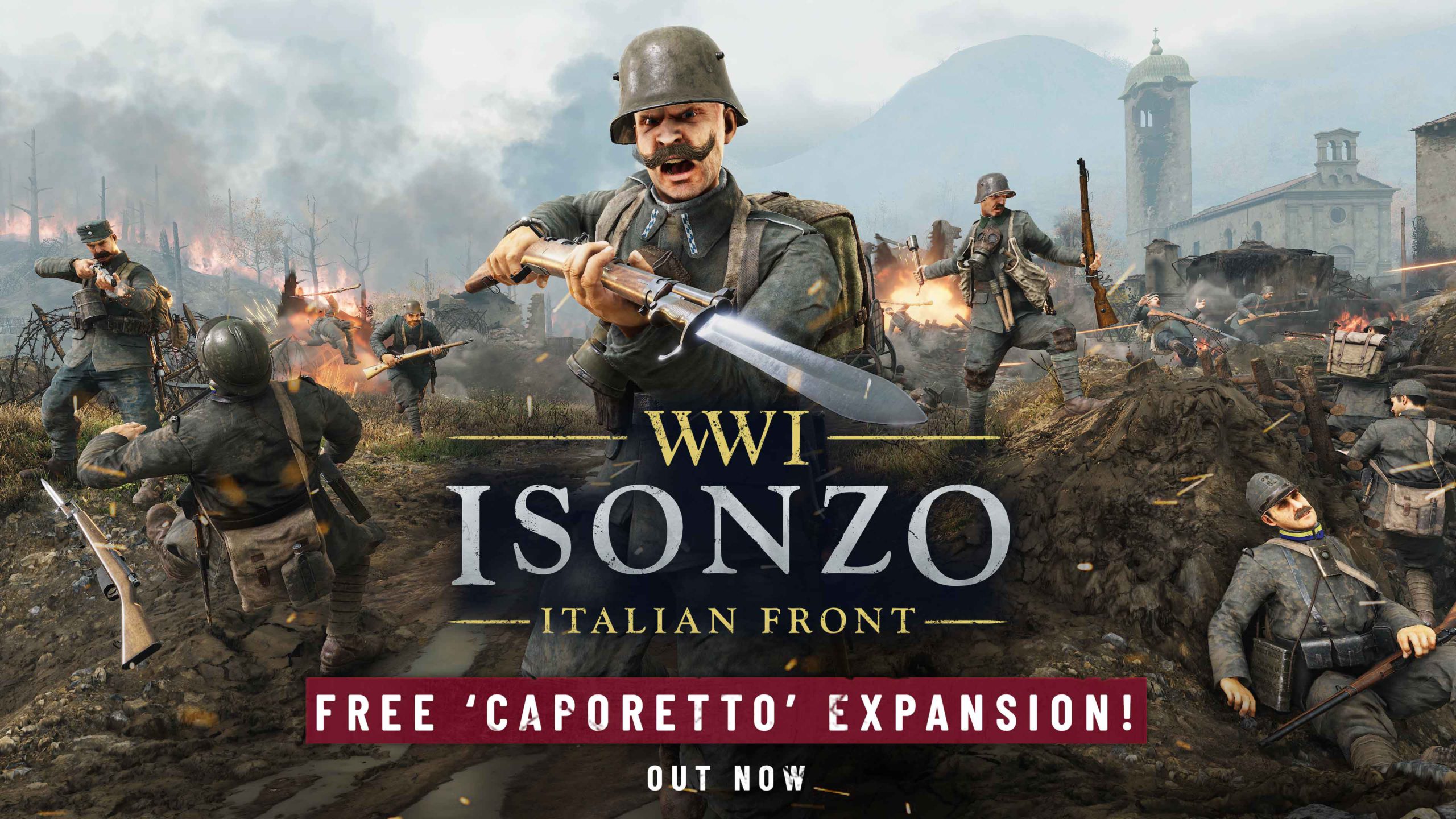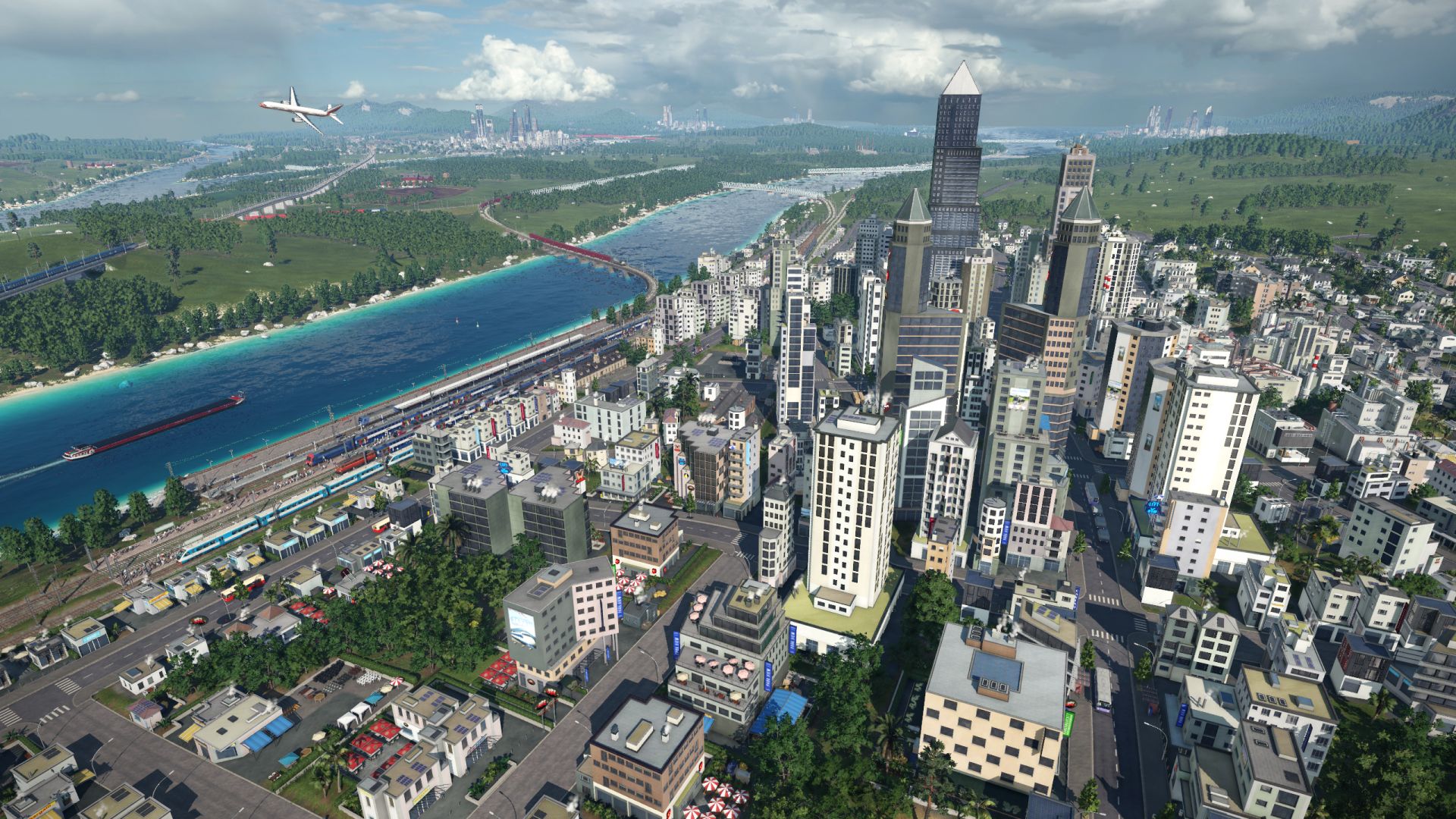GAMES
Microsoft Flight Simulator Releases New Aircraft in the “Local Legends” Series Today with Fokker F. VII

The Fokker F.VII and the Fokker F.VIIb/3m Southern Cross Come to Life in Microsoft Flight Simulator
Today, we are excited to announce that the Fokker F. VII airplane, the second plane in our “Local Legends” series, is available now in Microsoft Flight Simulator. The series celebrates the history of aviation and releases always coincide with each World Updates. Local Legends are aircraft that are locally famous but may not be as well known to a worldwide audience.
The F.VII, manufactured by Fokker of the Netherlands, stands as one of the greats of aircraft history. It advanced the world of aviation during the Golden Age of Flight of the 1920s and 1930s due to its endurance, reliability, power, and load carrying ability. The F.VII, which first took flight on November 24,1924, and was introduced to the public in 1925, served in the early airline industry, moved cargo, carried air mail, and exploration.
Originally designed as a single-engine airplane, the high-wing F.VII was manufactured primarily as a tri-motor, powered by three 9-cylinder Wright J-6 Whirlwind radial engines that deliver 300 horsepower each. With a range of 750 miles, a cruise speed of 111 mph, and a takeoff and landing run of just under 750 feet, the F.VII proved to be ideal for numerous scenarios.
Able to carry up to 8 passengers, a total of nearly 5,000 pounds of cargo, or a combination of the two, the Fokker F.VII became famous for a number of airmail, passenger, and cargo lines. The F.VII was also the aircraft of choice of a number of explorers on expeditions across continents, oceans, and ventures into polar and other unexplored regions. The Fokker F.VII is a magnificent, emblematic icon of the early days of the world of aviation, one of the few that captured imaginations worldwide and enjoys an enduring legacy.

The Fokker F.VII bundle includes:
Southern Cross
The famous Southern Cross is the Fokker F.VIIb/3m aircraft that completed of one of aviation’s greatest firsts, the incredibly ambitious crossing of the Pacific Ocean—7,250 miles from Oakland, California, to Brisbane, Australia. Nine days after they began, while battling storms, exhaustion and equipment malfunctions, the four pilots reached Brisbane, in Australia’s Queensland.
To cross the Pacific, the aviators navigated Southern Cross on a course that first took them to Hawaii, then on an incredible 3,167-mile, 34-hour leg of the journey to Fiji — the first time an airplane landed on the island — and finally onto Brisbane. Historians recount that the success was owed as much to the Southern Cross as it was to the four flying it.

Friendship
The Friendship is the Fokker F.VIIb/3m that crossed the Atlantic Ocean in June of 1928 with soon-to-be famed aviator Amelia Earhart as a passenger. The trimotor aircraft took just over 20 hours for the crossing, starting at Trepassey Harbor, Newfoundland, and touching down at Burry Port, Wales. The flight of the high-wing monoplane helped indelibly stamp the Fokker F.VII line of aircraft into the annals of history as one of early aviation’s true greats.
Josephine Ford
The Josephine Ford is a Fokker F.VIIa/3m flown by Richard Evelyn Byrd on his daring expedition to the North Pole on May 9, 1926. At that point in history, the North Pole had never been reached by an aircraft. While questions remain about the success of the attempt, it remains one of the great adventures of the early days of aviation, and one which proved the trimotor Fokker F.VIIa/3m as one of the icons of the Golden Age of flight.

Fokker F.VIIa
The Fokker F.VIIa is a single-engine monoplane manufactured by Dutch aviation firm Fokker. The F.VIIa, one of the world’s first transport aircraft, was slightly larger than Fokker’s original F.VII and also sported a number of technical improvements, including a heated cabin. The aircraft, which could carry up to eight passengers or 1,750 pounds of cargo, took its maiden flight on March 12, 1925. A total of 36 of the F.VIIa were manufactured and formed an integral part of a number of airlines that flew routes throughout Europe and many other parts of the globe.
KLM Livery
The Fokker F.VII proved to be a historically critical aircraft for the Dutch airline KLM during its fledgling period. The first F.VII, painted in the distinctive blue KLM livery, was delivered to the airline in 1924 by Anthony Fokker. This aircraft was used on the first flight ever from the Netherlands to the Dutch East Indies. The F.VII allowed the airline to flourish and laid the groundwork for what would become one of the world’s premier air carriers.

The Fokker F.VII planes have been meticulously recreated for Microsoft Flight Simulator, with careful attention paid to the finest details of both exteriors and interiors. To celebrate and appreciate the accomplishments of the brave aviators of the 1920s, included in the bundle are also the historic missions of the Southern Cross, Josephine Ford and Friendship.
The Fokker F.VII bundle is available today on the Microsoft Flight Simulator in-sim marketplace for $14.99. Microsoft Flight Simulator is now available for Xbox Series X|S and PC with Xbox Game Pass, PC Game Pass, Windows 10/11 and Steam. For the latest information on Microsoft Flight Simulator, stay tuned to @MSFSOfficial on Twitter.
Microsoft Flight Simulator: Standard Game of the Year Edition
Xbox Game Studios
$59.99
$47.99
PC Game Pass
Xbox Game Pass
The Microsoft Flight Simulator Game of the Year (GOTY) Standard Edition celebrates all the positive feedback, reviews and awards garnered, but it is also a “Thank You” to our fans – new and old – that have made Microsoft Flight Simulator such a phenomenon. The Microsoft Flight Simulator Standard Game of the Year Edition includes 25 highly detailed planes with unique flight models and 38 hand-crafted airports.
This enhanced edition introduces simmers to five all-new aircraft, eight new handcrafted airports, six new Discovery Flights, new tutorials, and updates to the weather system
The five new handcrafted aircraft in Microsoft Flight Simulator include:
• Boeing F/A-18 Super Hornet: Our first military jet and a highly requested feature from the community. The Top Gun: Maverick expansion will release with the movie next Spring, but we wanted simmers to have the opportunity to test their need for speed this holiday.
• VoloCity: We partnered with well-known German company Volocopter, which is working on an eVTOL called “VoloCity”, a vision for an urban air taxi. We worked closely with the Volocopter engineering team to develop an authentic version of the prototype aircraft for the simulator. This is our first aircraft that can perform pinpoint landings and is a teaser of what you can look forward to in 2022 when we intend to launch helicopters in the sim.
• Pilatus PC-6 Porter: This legendary short takeoff and landing (STOL) utility aircraft is a highly versatile plane from Switzerland and comes with several cockpits, cabins, and landing gear variations. It is the result of our close collaboration with the manufacturer and the development efforts by famed developers Hans Hartmann and Alexander Metzger resulted in a great and fun new aircraft with exception capabilities in the simulator.
• CubCrafters NX Cub: Yakima-based CubCrafters recently introduced a nosewheel option for their flagship CC-19 XCub Aircraft, popularly called the NX Cub, which we are pleased to introduce to the flight sim audience to further enhance our bush flying and off airport options.
• Aviat Pitts Special S1S: One of our most popular planes gets a single-seat option with the release of this aircraft.
New Airports – We are adding eight handcrafted airports in Central Europe and the United States:
• Germany
o Leipzig/Halle Airport (EDDP)
o Allgäu Airport Memmingen (EDJA)
o Kassel Airport (EDVK)
•Switzerland
o Lugano Airport (LSZA)
o Zurich Airport (LSZH)
o Luzern-Beromunster Airport (LSZO)
•United States
o Patrick Space Force Base (KCOF)
o Marine Corps Air Station Miramar (KNKX)
The Game of the Year release is adding information about 545 previously missing airports in the United States.
New Missions -Based on the popularity of the recently introduced Discovery Flights, we are adding an additional six locations (Helsinki, Freiburg im Breisgau, Mecca, Monument Valley, Singapore, and Mount Cook) to this popular series.
New Tutorials – To further expand the onboarding experience, we are adding 14 new tutorials, introducing simmers to Bush flying (in an Icon A5) and IFR (in a Cessna 172).
New Features – We are also pleased to introduce several highly requested features by the community: an updated weather system, early access to DX12, and a dev mode replay system.
New Photogrammetry Cities – As part of our ongoing collaboration with Bing Maps, we are pleased to add a number of new photogrammetry cities: Helsinki (Finland), Freiburg im Breisgau (Germany), Brighton, Derby, Eastbourne, Newcastle, and Nottingham (UK) and Utrecht (Netherlands).
Microsoft Flight Simulator Standard Game of the Year Edition will be available as a free update for owners on PC and Xbox Series X|S. For new users, the GOTY Standard Edition is the perfect entry point to flight simming as it offers an even richer experience, and it will be the item they purchase as we are retiring the original. Invite your friends to experience the wonders of flight. The sky is calling!
GAMES
This Week’s Deals with Gold and Spotlight Sale

GAMES
The German Empire Marches to Italy in a Free Expansion Today

We have a new expansion for our WW1 Italian Front FPS game Isonzo releasing today! It’s the first part of our Caporetto season of free expansions, and features a whole new faction with the arrival of the German Empire on the Italian Front, and brings a new map for the Offensive game mode. There will be two more releases in the Caporetto season, each one with a new map to ultimately link together into a three map Caporetto Offensive.
The German faction comes with more than ten new weapons, as well as historically accurate uniforms and equipment. This first Caporetto map sees you taking part in the early stages of the Twelfth Battle of the Isonzo, with German troops assaulting Italian positions on the road to Caporetto. Historically it was a military disaster for Italy which brought down the government – but maybe things can go differently with you on the battlefield?
The update sees new uniforms and equipment from the German Empire for Isonzo’s six classes: Rifleman, Assault, Engineer, Officer, Marksman and Mountaineer. For those who aren’t familiar with the game, each class has different weapon, gear and perk options that allow you to specialize your play style within the overall focus of the class. For instance, Marksmen are always sharpshooters, but a lot depends on your loadout. You could be a long-range sniper and observer identifying and eliminating high value targets with a scoped rifle, or you could equip body armor to take and hold a front line position with deadly accurate mid-range fire. Every class has choices to make in this regard.

In Isonzo’s signature Offensive game mode, one side must attack and break through multiple defensive lines. Thick layers of barbed wire, trenches, and whatever extra defenses the enemy engineers put together will stand in the way of a successful attack. Objectives can be taking and holding key points, or planting dynamite to sabotage enemy supply stashes or heavy artillery guns.
The new Caporetto map – the first of three in the season – is a huge battlefield based on the strategically important Monte Kolovrat. There are five defensive lines, where each line has two objectives for the attackers before they can advance further. While in the historical Battle of Caporetto both German and Austro-Hungarian forces were involved, in Isonzo we’ve chosen to focus on the German contribution, so the map recreates the stunning German advance from the town of Tolmein all the way to Kolovrat Ridge. It’s a damp, overcast day when the attack begins, and the attackers must first cut their way through lines of wire to break into a devastated town – including capturing a church defended by multiple heavy machine gun positions. Fortunately, in Isonzo there are many tactical options available to deal with such strong points: artillery barrages, smokescreens, snipers, rifle grenades, even poison gas. From there, it becomes a literal uphill battle for the German attackers as they begin to climb towards the peak of Kolovrat Ridge. They’ll need to sabotage bunkers and capture command posts while navigating rocky trenches and steep forested slopes. At the penultimate fourth defensive line there is a huge siege mortar to sabotage and a cluster of houses providing cover to the Italian defenders – then it’s one last climb to reach the final objective: Hill 1114. If the Germans can take it, the Italians will finally be the ones fighting uphill as their reinforcements stream in to try and counterattack.

Of course, things are no walk in the park for the defenders either – although it’s easier to maneuver when going downhill, and it’s much simpler for officers to deploy flares to call in support, the extensive trench lines can become a liability once the Germans get a foothold, providing cover as they advance. Some of the Italian defensive positions can be exposed against the sky, making it easy for German marksmen to pick off targets. Italian engineers should make good use of their construction abilities to put down additional sandbags and lay out extra wire to prevent German assault troops sneaking through the trees to flank trenches with their grenades or light machine guns.
As we mentioned before, historically the Battle of Caporetto was a disaster for the Italians. Appalling leadership led to poorly motivated and unprepared troops falling apart in the face of the combined Austro-Hungarian and German armies using cutting edge infiltration tactics. The Italian soldiers were not allowed to retreat until too late, and in the end hundreds of thousands would surrender. After Caporetto the top Italian general was fired and replaced by someone far more competent, who managed to turn the war around for the Italians. In Isonzo, it’s a more fair fight where both sides have an equal chance of winning, if they can use all the tactical options available better than their opponents.
The release will also bring other improvements to the game, including a prestige mode and higher level cap. Additionally, for those who want more options for visual customization of their character, the Royal Units DLC is releasing alongside the free expansion and contains uniforms from the German Kingdoms of Bavaria and Württemberg. Though part of the German Empire, these states had their own distinctive uniforms which we’ve carefully recreated with the same accuracy and attention to detail as with the other uniforms in the game.

The Battle for Caporetto Begins…
Isonzo is available right now on the Microsoft Store for Xbox, and the free Caporetto expansion is out today! Plenty of time to master the art of mountain warfare before the German Empire joins the action on the Italian Front. Follow us to get the latest development news as we add the finishing touches!
We’ll see you in the trenches!

Isonzo
BlackMill Games
$29.99
World War One expands to the mountains of the Italian Front – beautiful but deadly in equal measure. Inspired by the two year struggle for control of the Isonzo river valley and the Alps during World War One, Isonzo elevates the WW1 Games Series, figuratively and literally.
From the makers of Verdun and Tannenberg…
Take part in historical offensives from the Sixth Battle of the Isonzo to the Strafexpedition. Reflecting the course of the actual battles, as the attackers advance the fighting will shift through vastly different landscapes within a single offensive: from hillside fortresses to mountain trenches and fierce urban combat on city streets. Everything is recreated based on research and field trips, from sound effects and uniforms down to the houses, vineyards and trenches you’ll be fighting over.
The new Offensive game mode puts you right in the middle of key historical offensives on the Italian Front. Lead the charge across stunning Italian landscapes as you choose your path to victory – cut paths through barbed wire, flank your enemies by following mountain trails, or man a mortar to blast a way through. Shape a dynamic battlefield by laying sandbags and wire, placing ammo crates, deploying trench periscopes or sniper shields, and more.
Call in support with a unique historically accurate flare system: flare guns can mark targets for artillery or biplane flybys, or different colored flares can be used to guide your team. Once the big guns have softened up the enemy, finish the job at close quarters with an Arditi dagger or mountaineer’s pickaxe. Man heavy machine guns, mortars and even mountain guns for more direct fire support.
Choose from six classes based on historical combat roles and build your loadout from a selection of weapons, equipment and perks linked to that class, giving flexibility and variety while staying grounded in what real soldiers might have carried. You’ll be operating wire cutters, bandaging yourself and wounded teammates, and blowing the whistle to start an assault. One shot can kill and even lighter injuries can lead to quickly bleeding out.
Being an effective soldier in Isonzo is not just about being a good marksman. Mastering the terrain is also key – the mountain can be a friend or foe. Learn how to navigate well to maintain cover and surprise your enemies or support your allies.
Finally… watch out for the dreaded poison gas. You’ve never experienced WW1 action quite like this!
Isonzo key features include:
• MOUNTAIN WARFARE: Assaulting mountain fortifications, battling through ruined towns, and fording rivers are just a few of the challenges you’ll face as you fight your way through numerous enemy positions
• TACTICAL MULTIPLAYER FPS: Choose your role and loadout carefully to survive this high altitude combat – play a sniper to pick off the enemy engineers before they can cut your wire, use rifle grenades to clear enemy machine guns, and much more
• WORLD WAR ONE GAMEPLAY: Historical Offensive game mode based on real battles and focused on the unique challenges of Alpine warfare. Fight with 30+ WW1 weapons, poisonous gas attacks, and intense artillery barrages
• BUILD FOR VICTORY: Place your own wire, sandbags, trench periscopes, and more! Whether you’re digging in or on the attack, shaping the battlefield to your advantage will be key to victory
• FACES OF WAR: Make every class your own by picking from a variety of historically class-appropriate uniforms, accessories and headgear. As a finishing touch, you can even pick your mustache from several famous period-accurate styles!
• AUTHENTIC WW1 ATMOSPHERE: Accuracy in everything from maps and weaponry to music and the uniforms – fight for the Kingdom of Italy, the German Empire or the Austro-Hungarian Dual Monarchy
MORE GAMES IN THE AUTHENTIC WW1 GAME SERIES
Immerse yourself in more WW1 action with our other standalone titles Tannenberg and Verdun. Experience trench warfare on the Western Front in Verdun, or maneuver for control of key sectors in Tannenberg on the Eastern Front. These authentic WW1 shooters let players choose from a range of squads from across the war, as they fight for control of the ever-changing frontlines.
GAMES
Transport Fever 2: Console Edition is Bringing the Full Transport Tycoon Experience to Xbox

Today, we proudly share a sneak peek into the development of Transport Fever 2: Console Edition, and how we managed to bring the full transport tycoon experience to Xbox.
Transport Fever is a very popular and highly rated transportation tycoon franchise on PC. Its latest entry, Transport Fever 2, delivers a level of size and detail never before seen in the genre. The goal of the game is to build a successful transportation company by constructing railroads, streets, water and air lines. Starting in the 19th century, the player connects towns and industries to transport both passengers and cargo. In addition to a customizable free game mode, there is also a fully-fledged campaign mode with challenging missions set in real-world transportation history.
After the huge success of Transport Fever 2 on PC, it was only logical to bring the experience to consoles as well. Not only that, but no efforts were spared to give the console community the full experience that made the game great on PC. In order to achieve this, the engineers at Urban Games had to pull some rabbits out of their engineers’ hats.
Always providing the freshest layer of paint
One of the most cherished features of Transport Fever 2 are its highly detailed vehicles. The game comes with more than 200 lovingly hand-modeled trains, ships, and airplanes, each sporting multiple 4k textures and normal maps.
On PC, it is easily affordable to have all the models and textures in memory whenever needed, as a typical rig has 16 GB of RAM and a GPU with a dedicated extra memory. Consoles, however, are built differently. They have a unified architecture with an overall smaller amount but ultra-fast memory. The key to make it work on consoles is texture streaming, which allows to clear textures of models that are not in view anymore. Moreover, this technology is used in Transport Fever 2 to constantly load textures at the highest affordable resolution to present the stars of the show, like the classic Class A 3/5 steam locomotive, in their best coat of paint at all times.
Keeping the ground like a console pro
A trademark of Transport Fever 2 are its huge maps. During development of the game, it was always paramount to provide a real sense of scale. The engine should allow for maps where a high-speed train, such as the famous Japanese Shinkansen, can really make use of its superior speed. So, a lot of effort was put into designing a highly effective terrain rendering pipeline that can handle maps of more than 120 sq miles of size with a detail resolution of almost 1 yard. Central to this is a dynamic terrain tessellation algorithm on the CPU that, while costing a bit of extra memory, makes sure the engine can render these maps on a wide variety of PCs.

Now, enter the world of consoles with their incredibly well-designed GPUs and graphic APIs. Here, the hardware can be leveraged very well for terrain rendering by making use of the GPU tessellation feature. This feature generates the render mesh for the terrain fully on the graphics card, saving valuable processing time for the complex economy and city growth simulations. While generating more triangles, the hardware approach still costs less memory overall due to its efficiency. So vast maps can be viewed from a bird’s view high up in the sky and seamlessly zoomed in down to individual rocks on a riverbank.
Inspiring the inner architect
Finally, let’s talk about constructions, a central and defining part of the Transport Fever 2 experience. Constructions are large assemblies that consist of dozens of assets, street segments, ground decals and terrain modifications. Think of structures like airports, train stations, docks, highway crossings, and many more. Anything that is needed to build a vast transportation empire.
For a smooth construction experience, it is key that the player really feels that he has precise control over the building placement. On PC, constructions are typically built using the mouse. As the average PC user is very well adjusted to this method of input, it is sufficiently performant to calculate the entire construction each frame and place it under the cursor. However, on consoles, the best way of building constructions is to have them always kept in the center of the screen and move the camera along the map for placement. And moving the camera needs to be as smooth as silk.

So, for the console release of Transport Fever 2, the construction preview pipeline was overhauled. All dynamic calculations are now performed in the background while a static preview of the structure and its underlying ground plan are shown. Not only are constructions now completely stable in terms of FPS, but they also give feedback to the player on what environment features the construction would tear down when built.
Let’s get tycooning on console
We are very excited to bring the Transport Fever franchise to consoles for the first time ever with the release of Transport Fever 2: Console Edition on Xbox Series X|S and Xbox One in February 2023, and we hope you will enjoy it as much as we did developing it.
-

 MARKETING7 days ago
MARKETING7 days agoRoundel Media Studio: What to Expect From Target’s New Self-Service Platform
-

 SEO6 days ago
SEO6 days agoGoogle Limits News Links In California Over Proposed ‘Link Tax’ Law
-
SEARCHENGINES6 days ago
Daily Search Forum Recap: April 12, 2024
-

 SEARCHENGINES5 days ago
SEARCHENGINES5 days agoGoogle Core Update Volatility, Helpful Content Update Gone, Dangerous Google Search Results & Google Ads Confusion
-

 SEO5 days ago
SEO5 days ago10 Paid Search & PPC Planning Best Practices
-

 SEO7 days ago
SEO7 days agoGoogle Unplugs “Notes on Search” Experiment
-

 MARKETING6 days ago
MARKETING6 days ago2 Ways to Take Back the Power in Your Business: Part 2
-

 MARKETING4 days ago
MARKETING4 days ago5 Psychological Tactics to Write Better Emails

















You must be logged in to post a comment Login